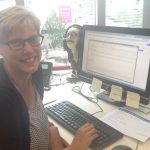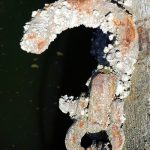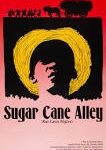
Risa Gluskin interviewed Carson Phillips, an experienced Holocaust educator, about his path toward his profession and key resources for Ontario teachers. This version of the interview has been slightly edited for length.
Risa Gluskin is a high school history and student success teacher in Toronto. As she is the former editor of Rapport, she has returned to her “Doing History” series while on leave this year. Please visit her blog, gluskin.ca, for her series “For Teachers of World History.”
You originally began your career in marketing. How did you start your journey in Holocaust education and what were the subsequent steps along the way?
My journey actually began after the horrific terrorist attack on September 11, 2001. Watching the collapse of the Twin Towers had an enormous effect upon me. I had been thinking of changing careers for some time and 9/11 became the catalyst for me to embark upon this journey of learning and eventually teaching. While researching potential academic programs, a friend who is the daughter of Holocaust survivors suggested I take a new course being offered at OISE – the Advanced Certificate in Holocaust and Genocide Education. I knew some Holocaust survivors and decided to speak with them, get to know them better and I asked their opinion about getting involved in this area. ….
This in turn led to my MA and PhD studies at York University where I was fortunate to be mentored by some of the most thoughtful professors I’ve encountered. My learning journey also included a number of fellowships – the USHHM, Royal Holloway and Holocaust Education Foundation, Jewish Foundation for the Righteous, and a postdoc fellowship at the Wiener Wiesenthal Institut in Austria. These experiences allowed me to layer knowledge of the Holocaust while also approaching a deep study of the Holocaust through an interdisciplinary lens. …
You were managing director of the Toronto Holocaust Education Centre for 14 years. You must have interacted with thousands and thousands of students and their teachers. What was your approach to or main philosophy of Holocaust education there? Please share any interactions that stick out in your memory.
I am a firm believer that as educators we need to meet learners where they are at in their journey of learning about the Holocaust. That means providing the bridging and scaffolding necessary to help students understand larger issues that define and characterize what the Holocaust was, and what it isn’t. I don’t believe in reducing complex issues and questions raised by studying the Holocaust down to their most simplified form.
For example, the Holocaust was not about bullying; reducing genocide down to this behaviour does a disservice to the six million Jews killed in the Holocaust and a disservice to our students to understand complex issues. We can, however, and I would say that we must, provide them with the tools and the language to be able to try and comprehend what the Holocaust was, as well as the decisions individuals and groups made that contributed to the Holocaust. We meet students where they are at, provide them with the tools and skills to understand complex issues and teach ‘up’ rather than ‘down’.
I am also an enthusiastic supporter of using primary source documents as part of the learning experience. Archival photographs, diaries written by victims, as well as official documents and records created by the perpetrators themselves help all of us to understand the historical context in which the Holocaust unfolded. For me that is a really exciting part of teaching history- putting primary source documents, photographs and artefacts into the hands of learners and seeing them “unpack” history.
Similarly, the oral histories or life stories of those who survived the Holocaust can provide powerful learning opportunities in connecting students to the human-ness of history. Although all history happens in a specific time and place, it also involves human beings whose lives were irrevocably changed by the Holocaust.
Working at the Toronto Holocaust Education Centre (now known as the Toronto Holocaust Museum) was an incredibly fulfilling experience. One of the most inspiring episodes, which would happen a couple times a year, was when a new teacher would call to book a student tour and ask if a specific survivor who they had met during their own tour while a student, was still involved in the Centre. The encounter with the survivor years previously had left an indelible mark on the student, now teacher, who could remember details of the survivor’s experiences and they wanted their students to have a similar encounter. When this could be facilitated it was truly inspiring and I could see first-hand the long term effect of Holocaust education.
A second, very memorable and impactful experience was a partnership I initiated with Austrian Service Abroad, an organization that provides young Austrians the opportunity to engage in Holocaust memorial work upon graduation from high school. Each year a young Austrian known in German as a Gedenkdiener (memorial servant) would work at the Centre for a 10-month period carrying out a number of essential tasks. The most rewarding was to see the bonds of friendship that resulted between survivors, many of whom remembered being dismissed from their schools for being Jewish, and the Gedenkdiener who represented a new generation of Austrian youth. The impact was profound and some previous Gedenkdiener and survivors still keep in touch today. The Gedenkdiener could also make a direct impact on high school students through a peer education approach and discussion about how the Holocaust is taught today in Austria and complex themes like what it means to be from one of the countries that shares responsibility for the Holocaust. Very powerful learning experiences!
We also have a Gedenkdiener at the Azrieli Foundation and the program is a remarkable opportunity for youth to engage on a deeper level with Holocaust education and remembrance. The program is close to my heart, and one that I fully support. I was deeply honoured to receive the Austrian Holocaust Memorial Award from Austrian Service Abroad this year.
Before you left the Toronto Holocaust Education Centre you were involved in the redesign that is now in effect at the museum. What was your role in that and how does the redesigned museum reflect the evolution of Holocaust education?
I worked with the curatorial team specifically on the selection of archival documents and photographs as well as writing the historiography of the Holocaust as presented through museum text and film script. A few points that guided this process:
- The approach incorporated historical thinking concepts as methodology. We wanted to encourage visitors to think deeply about why people acted in certain ways during the Holocaust, what other options may have been available to them, and what were the consequences of these actions.
- It was important to present what was happening in Canada while the Holocaust was unfolding in Europe. This allows visitors to grapple with some of the decisions Canada made as a country (e.g., immigration policies, the St. Louis, domestic cases of antisemitism as well as Canada’s role as a liberator) and presents the fullness of history.
- Many of the artefacts on display come from Holocaust survivors who have a direct and personal connection to them. One remarkable and very rare artefact is the Ketubah or wedding contract that belonged to Vera Schiff. It was written by the Chief Rabbi of Denmark who was interned in Theresienstadt, where Vera and her husband Arthur were married a few months before the camp was liberated. It provides visitors with remarkable insights into life in the camp, what we term as ‘spiritual resistance’ as well as being a testament to the love between two Jews during the Holocaust. It really is a remarkable document and that it survived is also remarkable.


